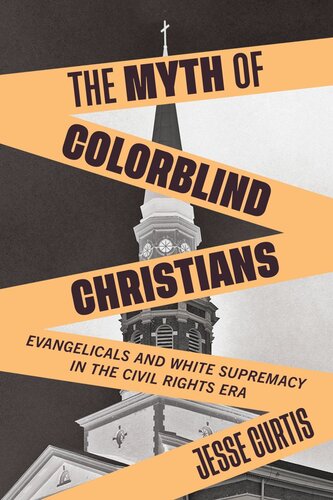

Most ebook files are in PDF format, so you can easily read them using various software such as Foxit Reader or directly on the Google Chrome browser.
Some ebook files are released by publishers in other formats such as .awz, .mobi, .epub, .fb2, etc. You may need to install specific software to read these formats on mobile/PC, such as Calibre.
Please read the tutorial at this link: https://ebookbell.com/faq
We offer FREE conversion to the popular formats you request; however, this may take some time. Therefore, right after payment, please email us, and we will try to provide the service as quickly as possible.
For some exceptional file formats or broken links (if any), please refrain from opening any disputes. Instead, email us first, and we will try to assist within a maximum of 6 hours.
EbookBell Team

4.0
56 reviewsReveals how Christian colorblindness expanded white evangelicalism and excluded Black evangelicals
In the decades after the civil rights movement, white Americans turned to an ideology of colorblindness. Personal kindness, not systemic reform, seemed to be the way to solve racial problems. In those same decades, a religious movement known as evangelicalism captured the nation’s attention and became a powerful political force. These two stories are deeply connected. In The Myth of Colorblind Christians, Jesse Curtis shows how white evangelicals’ efforts to grow their own institutions created an evangelical form of whiteness and infused the politics of colorblindness with sacred fervor. A church sanctuary, not a Republican Party meeting, proved to be the most influential site of evangelical activism in the second half of the twentieth century.
Christian colorblindness powered the evangelical coalition to new heights of influence even as it kept Black evangelicals on the outside looking in. While Black evangelicals used the rhetoric of Christian unity to challenge racism, white evangelicals used the same language to urge their Black counterparts to stop demanding racial reforms, arguing that all were equal under Christ and Christians should not talk about race. Christian colorblindness not only sidestepped the need to dismantle the American religio-racial hierarchy, but became a primary defense for it, as white evangelicals portrayed movements for racial justice as threats to Christian unity.
The push toward Christian colorblindness transformed American evangelicalism and the nation. Curtis argues that white evangelicals deployed Christian colorblindness not for antiracist purposes, but rather to protect new investments in whiteness. In the process, they anchored their own identities and shaped the very meaning of whiteness in American society. At once compelling and timely, The Myth of Colorblind Christians exposes how white evangelical communities avoided antiracist action and yet continue to thrive today.